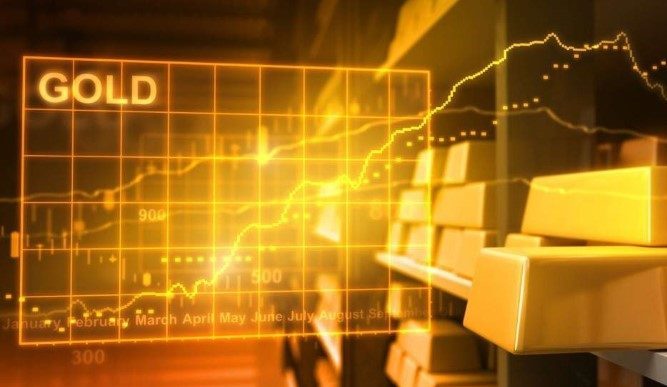In the note below, I write about what could drive the gold price up in 2020. But as I write, you also need to consider what could drive it down. On Friday morning, Aussie investors woke up to the news that the Dow Jones Industrial had fallen 10%, its biggest one-day fall since the 1987 crash. This followed several gut-wrenching days on the Aussie market.
This is what panic looks like, when you sell whatever you can sell. The actual move by stocks into a bear market shouldn’t surprise anyone who was paying attention. Valuations were stretched. Interest rates were low. Animal spirits were high.
But the speed of the correction is clearly a shock. And it prompts the obvious question: what now? You’ll find my answer below. The short version is that rapid financial asset deflation (a stock market crash) could give way to rapid inflation, driven by huge government spending and central bank efforts to stop the bleeding. Stay tuned for more tomorrow.
Yours,
Dan Denning,
What It Will Take for Gold to Reach a Mania in 2020
By Dan Denning
‘It was a pleasure to burn. It was a special pleasure to see things eaten, to see things blackened and changed. With the brass nozzle in his fists, with this great python spitting its venomous kerosene upon the world, the blood pounded in his head, and his hands were the hands of some amazing conductor playing all the symphonies of blazing and burning to bring down the tatters and charcoal ruins of history.’
Fahrenheit 451, Ray Bradbury
The coronavirus didn’t cause the bull market in gold. That bull market began in December of 2015. But the reaction of governments and central bankers to the emerging global pandemic may send gold to the next phase of a bull market: the mania. The task of this report is to show you what savers and investors need to know about interest rates, gold, and inflation in 2020.
We believe gold is real money. It has been for most of human history. But what’s driving gold right now is its appeal as a safe-haven asset? It has only two competitors in that regard: cash and government bonds. And for reasons I’ll explain shortly, gold should outperform both this year.
The policy response to the coronavirus (and the global recession in threatens to unleash) will be lower interest rates and more government spending. We’ve already seen both in Australia. The US Federal Reserve cut rates by 50 basis points in an emergency meeting in early March. Lower rates and more spending — plus anything else governments and central banks try to do like ‘helicopter money’ — should create inflation which SHOULD lead to the mania phase in gold.
Negative rates everywhere?
Let’s talk interest rates on government bonds first. There are over $13 trillion worth of negative yielding government bonds in the world. That’s extraordinary. It means governments — mostly in Germany, Japan, and Switzerland — are actually getting paid to borrow. Why would an investor accept a guaranteed loss if he bought and held a government bond to maturity?
Liquidity and safety. It’s easy to buy and sell most government bonds. That ‘liquidity’ makes them desirable when volatility and uncertainty are on the rise. Investors sell riskier assets (if they can) and park the cash in government bonds or cash until the storm blows over.
This is happening in the US as well. Last week the yield on 10-year US Treasury Notes made a new all-time low at 0.90%. In real terms — when we factor in inflation in the real economy — that means the yield on the US 10-year is ALREADY negative. This matters a lot to the immediate future of the gold bull market. Why, you ask?
One of the knocks on gold as a safe-haven asset is that it doesn’t pay a yield. A bond (usually) pays you interest. So does a savings account (although in some places in Europe, negative rates now apply to high-net-worth savers!). Gold doesn’t pay you anything to own it. It just sits there in a safety deposit box or in the corner of your sock drawer, taking up space and doing nothing.
My point is that one of the key objections to holding gold as a safe-haven asset (as opposed to government bonds or cash) isn’t a valid objection, at least not at the moment. Perhaps that’s why gold has been making new highs in currencies all around the world, including the major currencies.
German and Japanese bond rates — in nominal terms — are negative. In REAL terms they are even MORE negative. That explains why gold made a new all-time high denominated in euros last September, when it finally closed above the 2013 high of €1,377 (2012 was the peak of Europe’s first, but perhaps not last, sovereign debt crisis). Gold made an all-time high of €1,540 in Europe. Watch for new highs if pandemic spreads in Europe.
In yen terms, gold’s jailbreak to new highs began last July and August. Japan was one of the first countries to embrace negative interest rates and quantitative easing. It’s not surprising gold hit new highs there first. The Great British pound is in on the act as well. The GBP gold price made a new all-time high in July of last year, breaking through the ceiling of £1,128, set in September 2011. Next stop for the pound is over £1,300/oz.
There are only three major currencies in which gold has NOT made a new all-time high in, in the last 12 months: the Swiss franc, the US dollar, and the Chinese renminbi (whose value is pegged to the US dollar by the People’s Bank of China). The Swiss franc is the next cab off the rank. Every single Swiss government bond — from one-month to 50 years in maturity — currently trades with a negative NOMINAL yield (real yields are even lower). A gold price breakout in the Swiss franc seems imminent. The previous high was ₣1,668 in 2013. It’s ₣1,583 as I write.
As things stand, the US dollar will be the last currency in which gold makes a new all-time high. Why? Nominal US interest rates are still higher than major currency competitors. Plus, the dollar traditionally enjoys a ‘safe haven’ bid during turbulent times. But as bond prices go up, and US rates approach zero, we believe gold will be the biggest winner.
The previous all-time high for US dollar gold was $1,889/oz, set in late 2011. Gold would have to rise about 11% from recent prices to make a new all-time-high. It’s up 10% year-to-date and 30% in the last 12 months. That’s a bull market. But it’s not a mania. Not yet.
The breakout of gold to new all-time highs in US dollar terms may be the event that triggers the manic phase of the gold bull market — when the yellow metal rises against ALL paper currencies at the same time. If global calls for more stimulus and lower rates (in response to the coronavirus) contribute to higher actual inflation, the conditions are in place for much higher gold prices.
How high?
The ‘fair value’ of gold could rise to US$7,166, according to Charlie Morris, my colleague at the Fleet Street Letter in London. Charlie’s model is more technical than I can get into here. But it’s a combination of three factors. First, real interest rates and inflation expectations; second whether gold trades at a premium or discount to ‘fair value’ and what size that premium or discount is; third the real rate of inflation in the real economy.
A full explanation of the model is beyond the scope of today’s report. The idea that gold has a ‘fair value’ at all is controversial among gold enthusiasts. Gold is always priced in something else. It’s the value of those other currencies or instruments that changes. Gold doesn’t move. Nonetheless, in Charlie’s model, ‘fair value’ comes down to three things:
- When real yields are low and the expected rate of inflation goes up, the ‘fair value’ goes higher. Real yields HAVE been lower than the expected rate of inflation. But that rate has stayed low due to other factors (debt, demographics, a low oil price, and now COVID-19). But if money printing and negative rates raises expectation levels…the fair value goes higher.
- It goes higher still if gold begins to trade a premium to fair value, as it has in the past. An asset trades at a premium because people suddenly have a reason to want to own it, even if it means paying more than they would have last week or last month. Gold, not being a negative yielding government bond and the safest asset in the world, could easily be expected to trade at a premium to fair value in the next phase of this bull market (which began in 2015).
- The final piece is probably the most important one: actual inflation. If actual inflation is much higher in the next 5-10 years, the gold price (in all paper currencies) should be higher too.
Gold has already made new all-time highs against the euro and the Japanese yen. The Swiss franc and the US dollar are next. Real yields are low and heading lower. If inflation expectations rise with government spending and central bank money printing, the momentum for gold should increase.
At that point — the mania point — the gold price begins to trade at a premium to ‘fair value’ because people are panicked. They want safety at any price. And when actual inflation comes along — as it seems likely when central banks and governments have declared all-out war on the coronavirus — there is more fuel for the gold price fire.
You don’t want to be buying at that point, as paper money goes up in flames. In tomorrow’s report, I’ll show you three ways to buy gold now. One is for safety. One is for investors. And one is for pure speculators. It’s by far the riskiest way to benefit if gold rises. But it’s also the most lucrative way to take advantage if we’re right about the coming mania.
But what if we’re wrong? In tomorrow’s report, I’ll also look what could prevent gold from going higher. It comes down to inflation. There are powerful forces in the world — debt, demographics, and a low oil price — which could keep inflation expectations low. If that happens, gold prices (along with everything else) could go into a deflationary free fall.
Dan Denning,
For The Daily Reckoning Australia
|
Stay tuned… |

